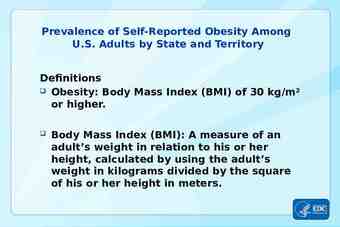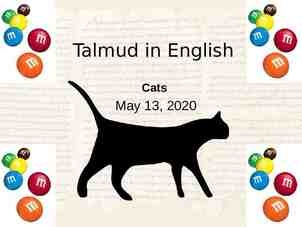Development of Criminology SOC 112 Part 2
29 Slides341.00 KB
Development of Criminology SOC 112 Part 2
Age of Realism 1. New turn after Classical School - logic / scientific methodology - scientifically interpret a. End: “Age of Enlightenment” - philosophized b. Begin: “Age of Realism” - objective science - talking with / looking at / examining
Realism, cont. c. Scientific study - of science / methodology - “proceeding in systematic / methodical way” d. Auguste Comte (1798 – 1857) - French sociologist - positivist approach (physical to social) (1) 3 stages in human thinking
Realism, cont. - theoretical mythological thinking - metaphysical / abstract classical - scientific / positive highest form (2) Fundamental change: slow - Positive School 3. Turning point - Charles Darwin: “Origin of the Species” - challenged doctrine of creation - more evolved / ridiculed
Realism, cont. a. Biological / cultural aspect - not individuals with “free will” b. Replaced: ‘DETERMINISM’ - behavior: physical / mental / environmental / social factors - beyond control c. Realism: asked new questions - search new ways / answer old questions - social sciences born
Modern Criminology 1. Cesare Lombroso (1835 – 1909) - “Father of Modern Criminology” - army physician / psychiatry professor / criminal anthropology professor a. Integrated positivism / evolutionism - relationship: crime to body - “The Criminal Man” - criminology: a modern science - investigation into causes
Lombroso, cont. b. Replaced free will / determinism - born criminal - lower life form - apelike ancestors - both traits / dispositions c. Atavistic stigmata - physical features - earlier stage of development - before becoming fully human
Lombroso, cont. d. Criminals have: - huge jaws / strong canine teeth - born female criminal: prostitute e. First clinical criminologist - categorize / classify types of criminals - first criminal typology f. Criminal types: - born / insane / criminoloids
Lombroso, cont. (1) Insane criminal - not from birth - change in brain - interferes with ability (right from wrong) (2) Criminoloids - ambiguous group - habitual / by passion - diverse types: epileptic / occasional g. Others: no enthusiasm / viewpoint
Lombroso, cont. h. Objectives of punishment - protection of society - improvement of criminal - should be individualized 2. Gabriel Tarde (1843 – 1904) - earliest sociological theories - rejected biological abnormality - normal people learned crime - others legitimate trades
Tarde, cont. a. “Laws of limitations” - how people become criminals b. Emulate behavior patterns - there is a pattern - all behavior (copy styles of dress) (1) Proportion to contact - intensity / frequency - more associate w/thief become thief - associate w/college friends college
Tarde, cont. (2) Inferiors imitate superiors - from town to country - upper class to lower class (3) Two behavior patterns clash - one takes place of other - guns replacing knives 7. Raffaele Garofalo (1852 – 1934) - follower of Positivist School - follower of Lombroso
Garofalo, cont. - law professor - not physical features crime - psychological features - “moral anomalies” (deviation from norm) a. Natural crimes: all societies - offend basic moral sentiments - probity: respect property - piety: infliction of suffering b. Organic deficiency
Garofalo, cont. - not held responsible - death penalty: rid society of maladapted - natural selection process (1) Lesser offender - lesser punishment 8. Enrico Ferri (1856 – 1929) - leader of Positivist School - crimes result of 3 causative factors:
Ferri, cont. a. Anthropological - age / sex / occupation / social class / etc. b. Physical - race / climate / seasons / temperature / etc. c. Social - population / religion / family / financial / etc. d. Listed 5 types of criminal:
Ferri, cont. (1) Born / instinctive - propensity for crime from birth (2) Insane - affected by mental disease (3) Passional - crimes of passion or emotion (4) Occasional - product of family / social conditions
Ferri, cont. (5) Habitual - criminal by habit - product of social environment 9. Determinism - individual has no choice - biological / other factors remove choice a. Positivists reject free will - ‘Doctrine of Determinism’ - punishment fit needs
Determinism, cont. b. Hard determinism - no freedom of choice - place in society / mental abilities c. Soft determinism - limited choice d. Biological determinism - Lombrosian theory - born criminal - disputed by many
Determinism, cont. 10. Charles Goring (1870 – 1919) - medical officer / English prison a. Greatest challenge - 3000 prisoners / control group - students / soldiers / hospital patients b. Rejected “specific stigmata” - poor physical condition - defective state of mind
Body-Type Theories 11. Ernest Hooten (1887 – 1954) - another source: search for criminality - elusive link: crime / physical factors a. Biologically determined criminality - prisoners / non-criminal control group - 1939 concluded: “In every population there are hereditary inferiors in mind and body as well as physical and mental deficients . . . . Our information definitely proves that it is from the physically inferior element of the population that native born criminals from native parentage are mainly derived.”
Body-type, cont. b. Somatotype School of Criminology - related body build to behavior - popular: first-half 20th century 12. Ernst Kretschmer (1888 – 1964) - German psychiatrist - 3 principle types of physique a. Asthenic - lean / slightly built / narrow shoulders
Kretschmer, cont. b. Dyplastic (athletic) - medium to tall / strong / muscular / coarse bones c. Pyknic - medium height / rounded face / massive neck / broad face d. Related to psychic disorders - depression / schizophrenia / etc. - associated types of crimes
Body-Type, cont. 13. William Sheldon (1898 – 1977) - brought Kretchmer’s work to US - formulated own somatotypes a. Dog breeder / points - worked out point system for humans - scale of 1 to 17 b. Endomorph - rounded body / short tapering limbs
Body-Type, cont. c. Mesomorph - large trunk / chest - muscles in hands / wrists d. Ectomorph - lean / fragile e. Mesomorphic more criminal 14. Sheldon Glueck (1896 – 1980) / Eleanor Glueck (1898 – 1972)
Body-Type, cont. a. Supported Sheldon - used somatotypes with delinquents b. Somatotypes lost favor - similar to Hitler’s “eugenics” c. ‘New phrenology’ (jokingly) - “bumps on buttocks take place of bumps on skulls” d. Extra sex chromosome
Body-Type, cont. 15. Difference / defective theories - criminal: biochemically different - biochemical theory: Fredrick Wohler a. Premenstrual syndrome / tension (PMS / PMT) - violent personal crime - lower rate for women b. Chromosomal Abnormality - normal: 23 pairs / most cells
Difference / defective, cont. (1) Pair of sex chromosomes - XY men / XX women (2) Some men: extra X (XXY) - compare to criminal acts c. Central Nervous System - slow brain waves - compared with criminal d. Nutrition
Difference / defective, cont. - chemical imbalance - vitamin deficiency / low blood sugar - caused by diet 16. Richard Dugdale (1841 – 1883) - inherited criminality - clinical researcher a. 1000 members - 280 paupers / 60 thieves / 7 murderers / 40 other criminals
Inherited, cont. - 40 with venereal disease / 50 prostitutes b. Transmitting degenerative traits - discount today / serious early 1900s c. 1927: Oliver Wendell Holmes (Sup. Ct.) “It is better for all the world, if instead of waiting to execute degenerate offspring for crime, or to let them starve for their imbecility, society can prevent those who are manifestly unfit from continuing their kind . . . three generations of imbeciles are enough.”


































